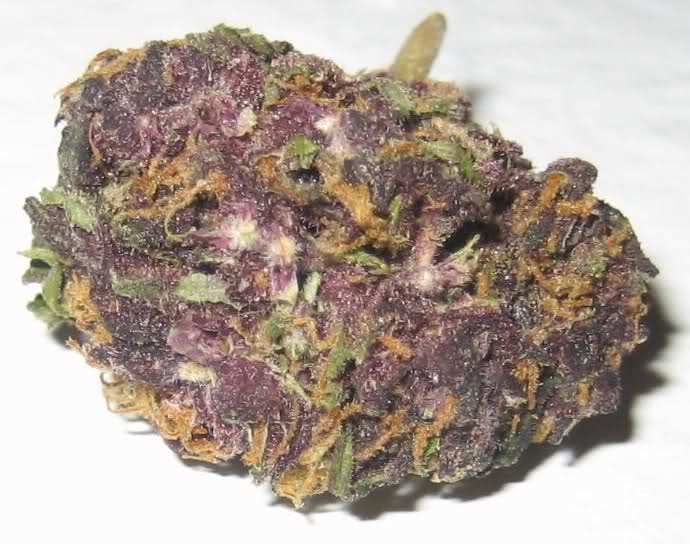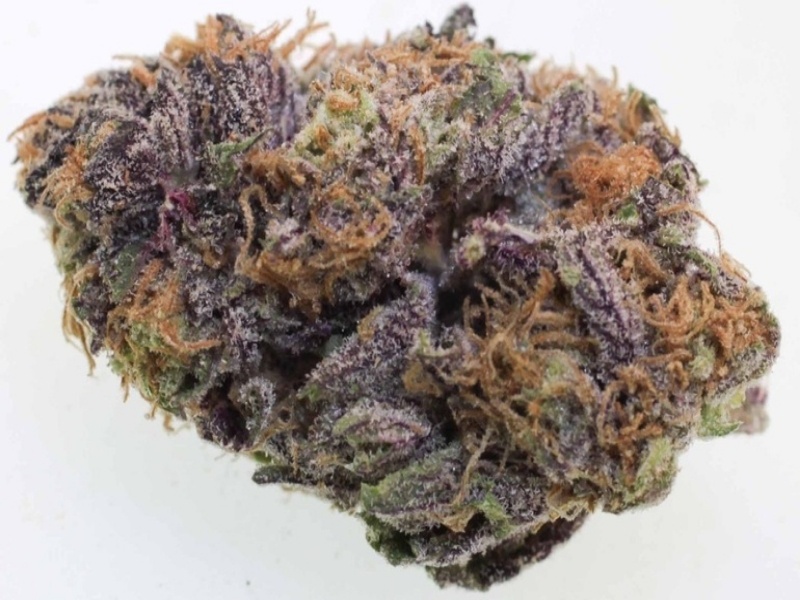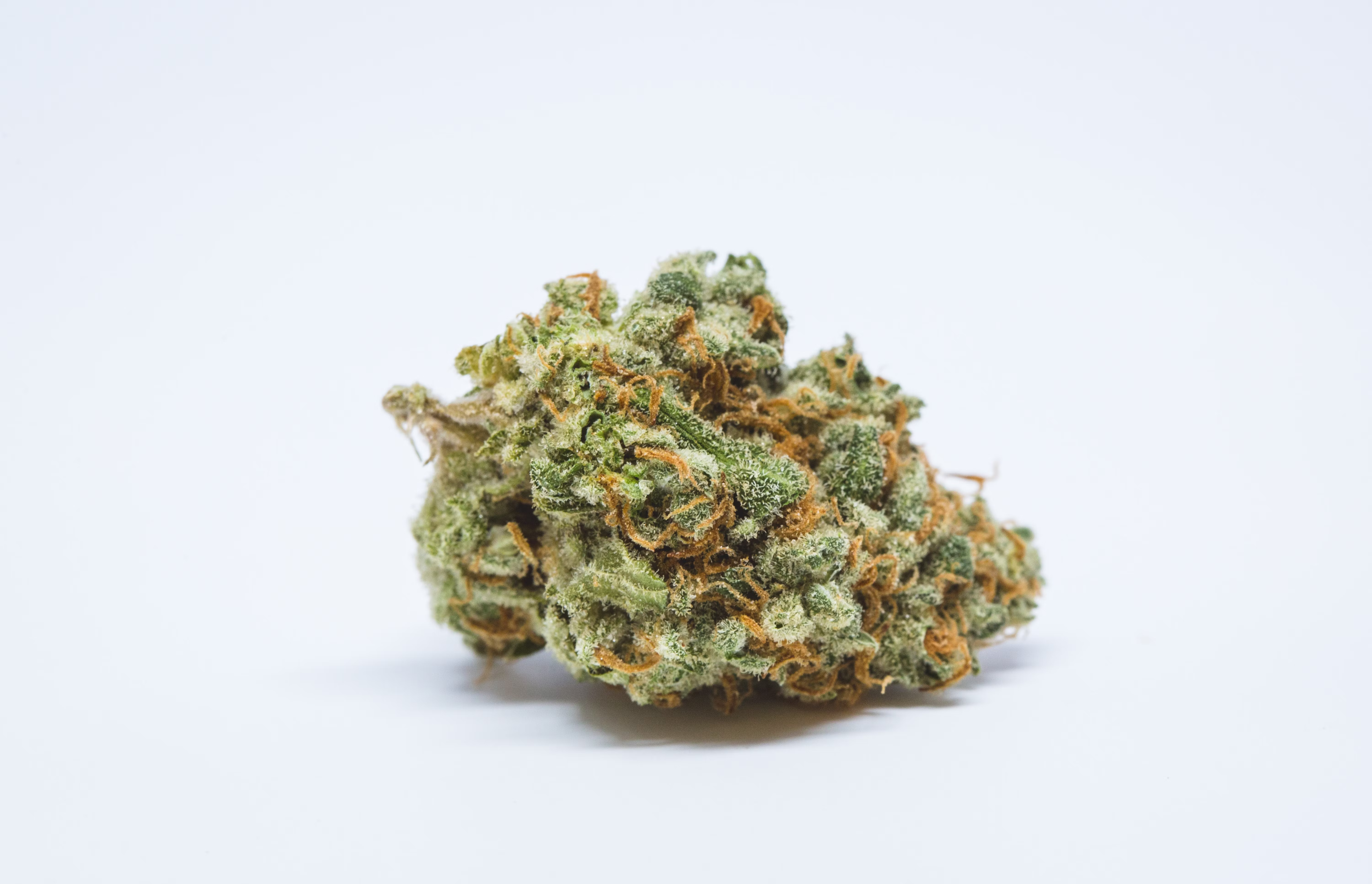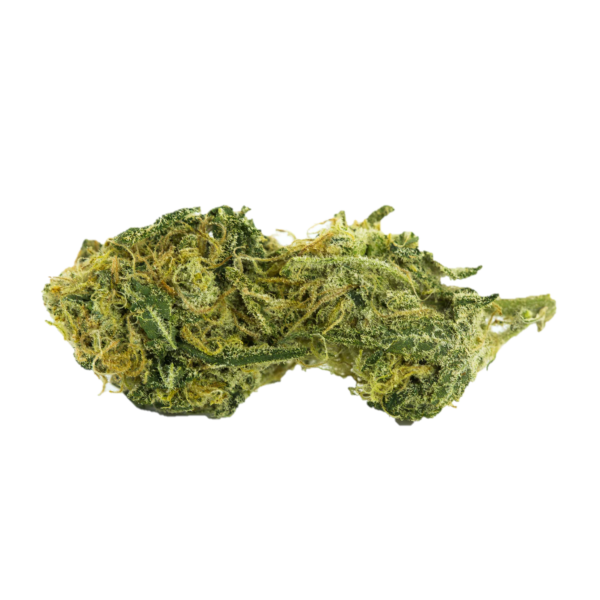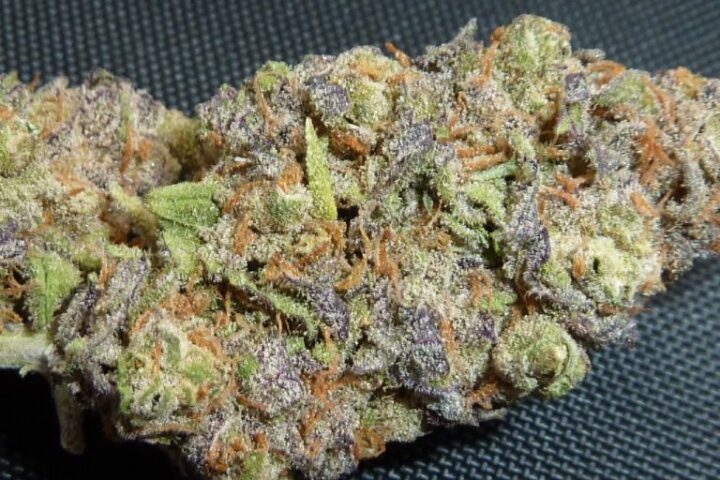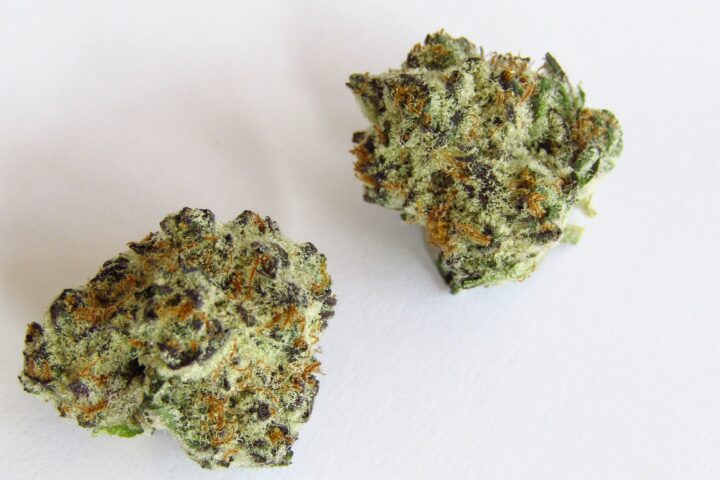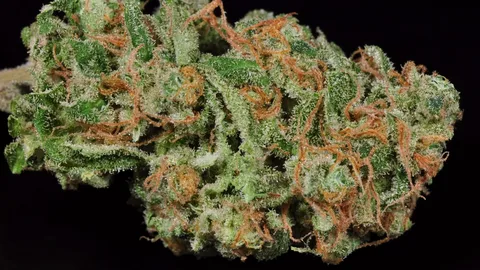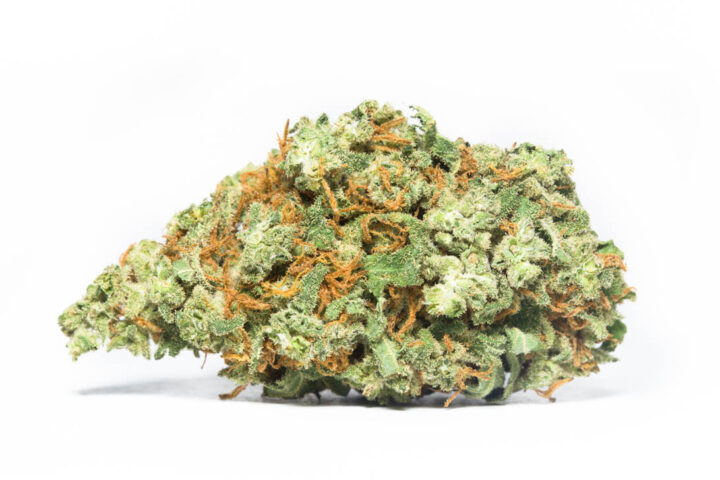Origin and Genetics
Pure Indica Origin
- Purple Skunk, a hybrid strain that boasts both Sativa and Indica traits, is primarily known for its Indica-dominant characteristics.
- This genetic makeup can be attributed to the purebred Indica strains that were used in its development.
- The origins of Pure Indica are rooted in the Indian subcontinent where they have been cultivated for thousands of years.
- It is believed by some researchers that these plants originated in the Hindu Kush mountain range, specifically in what is now modern-day Afghanistan and Pakistan.
- In terms of specific genetics, Pure Indica strains often contain high levels of Cannabinol (CBN), a non-psychoactive compound found in mature cannabis buds.
- This unique combination of genetics allows Purple Skunk to provide users with a distinct and potent experience that is characteristic of its Indica lineage.
- It’s worth noting, however, that the genetic makeup of Pure Indica strains can vary depending on various factors such as cultivation techniques and geographical locations.
- The distinct flavor profile and aroma of Purple Skunk are also reflective of the plant’s genetic heritage, showcasing a strong emphasis on earthy undertones with hints of fruitiness.
Purple Skunk is a strain that hails from California, USA, where it has been cultivated since the 1970s.
The Purple Skunk weed strain is a popular and potent cannabis strain that has been cultivated in California, USA since the 1970s. Its origins can be traced back to the skunk lineage, which was bred specifically for its high THC content and robust flavor profile.
The genetics of Purple Skunk involve crossing the original Skunk #1 strain with a purple-tinged phenotype of the Northern Lights variety. This resulted in a unique and sought-after strain that combines the best qualities of both parent strains.
- Parent Strains
- Purple Northern Lights
- Skunk #1
The exact genetic makeup of Purple Skunk is a closely guarded secret, but it’s believed to contain a combination of sativa and indica genetics. This results in a strain that offers both energizing and relaxing effects.
- Genetic Breakdown
- Sativa: 50-60%
- Indica: 40-50%
The unique flavor profile of Purple Skunk is a key factor in its popularity among cannabis enthusiasts. The strain is characterized by sweet, fruity notes with hints of earthy and herbal undertones.
- Flavor Profile
- Sweet Fruity Notes
- Earthy Undertones
- Herbal Accents
In terms of its effects, Purple Skunk is known for producing a powerful and long-lasting high. The strain is often described as euphoric and relaxing, making it ideal for users looking to unwind after a long day.
- Effects
- Euphoric
- Relaxing
- Long-Lasting High
In conclusion, the Purple Skunk weed strain is a highly sought-after and potent cannabis variety that has been cultivated in California since the 1970s. Its unique genetics and flavor profile make it an ideal choice for users looking to experience a powerful and relaxing high.
Cross-Breeding with Skunk #1
The origins of the Purple Skunk cannabis strain date back to the 1980s, when it was first developed by crossing the popular Skunk #1 with a rare purple phenotype.
The Skunk #1, also known as “The Godfather of Strains”, is an indica-dominant hybrid that was bred in the 1970s through selective breeding of three landrace strains: Afghani, Colombian, and Mexican.
Skunk #1 was created by Sacred Seed Company, a Canadian cannabis seed bank, in collaboration with Sam the Skunkman (a renowned breeder) and his team at Sensi Seeds.
The unique genetics of Skunk #1 are attributed to its exceptional terpene profile, high yields, and robust growth characteristics. It is known for its ability to thrive in a variety of environments and climates, making it an ideal candidate for breeding programs.
When the breeders at Sensi Seeds crossed the original Skunk #1 with a rare purple phenotype (which they refer to as “purple Afghani”), the resulting offspring inherited the desirable traits of its parents while also expressing new characteristics, such as a deep purple color and enhanced terpene profiles.
The genetic makeup of Purple Skunk is approximately 50% indica and 50% sativa. Its balanced effects, combining the euphoric and energizing properties of its sativa genetics with the sedating and pain-relieving effects of its indica heritage, make it an appealing choice for many cannabis enthusiasts.
The strain has been extensively cultivated by various breeders around the world, resulting in a diverse array of phenotypes that showcase varying levels of purple expression, potency, and flavor profiles. However, all Purple Skunk strains retain their parent’s exceptional genetic stability and adaptability, which continues to make this strain a sought-after choice among growers and users alike.
It’s believed to be a cross between Purple Afghani and Skunk #1, making it a unique blend of indica genetics.
The Origin and Genetics of Purple Skunk
Purple Skunk is a cannabis strain that has gained popularity among marijuana enthusiasts due to its unique combination of genetics and effects.
It’s believed to be a cross between two iconic strains: Purple Afghani and Skunk # This union brings together the best characteristics of each parent, resulting in a balanced blend of indica and sativa properties.
The Parents
Purple Afghani
- This strain is known for its dark purple color and sweet, earthy aroma.
- Its effects are typically relaxing and sedating, making it an excellent choice for evening use or as a sleep aid.
Skunk #1
- This classic strain is renowned for its potent, pungent aroma and high THC content.
- Its effects are often described as energetic and stimulating, making it ideal for daytime use or as a pick-me-up during periods of fatigue.
The Hybrid
Purple Skunk combines the best features of its parent strains to create a unique hybrid that offers:
- A sweet, earthy aroma with hints of citrus and fruit.
- Effects that are both relaxing and stimulating at the same time, making it suitable for various occasions.
This strain is often described as having a ‘balanced’ or ‘moderate’ effect, meaning it’s neither too energizing nor too sedating. This makes Purple Skunk an excellent choice for those who want to enjoy a mellow and enjoyable high without feeling overwhelmed.
Genetics
Purple Skunk is typically a sativa-dominant strain (60-40 or 50-50), which means it retains some of the energizing and stimulating properties of its parent, Skunk # However, its indica heritage also lends itself to relaxation and sedation.
The combination of these two genetic lines makes Purple Skunk a versatile strain that can be enjoyed in various ways:
- As a relaxing evening treat for those seeking a gentle unwind.
- As an energizing pick-me-up for daytime use or during periods of fatigue.
In conclusion, Purple Skunk’s unique blend of indica and sativa genetics has made it a favorite among marijuana enthusiasts. Its balanced effects, combined with its sweet aroma and earthy flavor, make it a strain that can be enjoyed in various settings and occasions.
Effects and Medicinal Properties
Anxiolytic and Analgesic Effects
The Purple Skunk strain is a popular cannabis variety known for its unique combination of effects and medicinal properties. It is an indica-dominant hybrid, resulting from crossing the infamous Skunk #1 with the sweet and tangy Purple Kush.
When consumed, Purple Skunk is renowned for its potent anxiolytic (anxiety-reducing) effects. This strain has been reported to ease feelings of unease, tension, and worry in individuals, making it an attractive option for those seeking relief from anxiety-related conditions.
Furthermore, the strain exhibits significant analgesic properties, offering effective pain management and alleviation. The THC content found within Purple Skunk binds with cannabinoid receptors in the brain and body, resulting in a profound reduction of chronic pain associated with various medical conditions.
The anxiolytic effects are largely attributed to the presence of cannabidiol (CBD) in Purple Skunk. CBD has been shown to possess anti-anxiety properties through its ability to bind with GABA receptors in the brain, thereby promoting relaxation and reducing stress levels.
As a result of its high THC content and unique cannabinoid profile, Purple Skunk offers a balanced blend of physical and mental relaxation. This strain’s analgesic effects can aid in the alleviation of conditions like arthritis, fibromyalgia, and other chronic pain disorders.
Individuals who have reported positive outcomes with the use of Purple Skunk for anxiety and pain management often attribute its medicinal properties to its rich terpene profile. The strain’s earthy and slightly sweet aroma is attributed to a complex blend of myrcene, beta-caryophyllene, and limonene.
The high myrcene content found within Purple Skunk has been linked to the analgesic effects mentioned earlier. Myrcene exhibits strong anti-inflammatory properties, further contributing to the strain’s effectiveness in pain management.
It is essential to note that while Purple Skunk offers numerous medicinal benefits, individual tolerance and sensitivities may vary greatly. It is recommended that new users consult with a medical professional before attempting to utilize this strain as treatment for any condition.
The potent anxiolytic and analgesic effects of Purple Skunk have made it a preferred choice among patients seeking relief from anxiety-related conditions and chronic pain disorders.
Purple Skunk is known for its sedating effects, which can help with anxiety and chronic pain.
Purple Skunk, a popular cannabis strain, boasts an impressive array of effects and medicinal properties.
The sedating effects of Purple Skunk make it an ideal choice for individuals seeking relief from anxiety and chronic pain.
When consumed, this strain can induce a deep sense of relaxation, allowing users to unwind and calm their minds. The calming influence of Purple Skunk can also help alleviate symptoms associated with stress and depression.
The therapeutic properties of Purple Skunk are further enhanced by its high cannabinoid content, particularly in THC and CBD. These cannabinoids interact with the body’s endocannabinoid system to produce a range of benefits.
One of the primary medicinal applications of Purple Skunk is its ability to manage chronic pain. The strain’s sedating effects can help reduce inflammation and alleviate discomfort, making it an effective option for individuals suffering from conditions like arthritis or multiple sclerosis.
In addition to its analgesic properties, Purple Skunk has also been shown to possess anti-inflammatory and antioxidant effects. These properties can help mitigate the negative impacts of chronic pain and promote overall well-being.
The combination of sedating and medicinal properties in Purple Skunk makes it a versatile strain with a range of applications. Its ability to alleviate anxiety, chronic pain, and inflammation has made it a popular choice among medical cannabis users.
Treatment of Insomnia and Nausea
The Purple Skunk weed strain is a popular variety of cannabis known for its potential medicinal properties and effects. The strain is a cross between two classic varieties, Skunk #1 and Northern Lights, resulting in a unique blend of characteristics.
One of the most notable effects of Purple Skunk is its ability to induce deep relaxation and reduce stress levels. This makes it an excellent choice for individuals suffering from anxiety disorders, PTSD, or insomnia. The strain’s sedative properties help to calm the mind and body, promoting a restful night’s sleep.
The medicinal properties of Purple Skunk include anti-inflammatory effects, which can be beneficial for treating chronic pain, arthritis, and muscle spasms. The strain also contains compounds that have been shown to have anti-epileptic properties, making it a potential treatment option for individuals with seizure disorders.
Purple Skunk has been reported to be effective in alleviating symptoms of nausea and vomiting associated with chemotherapy, HIV/AIDS, and other conditions. The strain’s ability to stimulate appetite can also help individuals who struggle with weight loss due to chronic illness or medication side effects.
When treating insomnia and nausea with Purple Skunk, it is essential to start with a low dose and gradually increase as needed. Consuming the strain in edible form or using it in a vaporizer can provide more control over the dosage and minimize potential negative effects.
Individuals taking medications should consult their healthcare provider before using cannabis products, including Purple Skunk. Combining cannabis with certain medications can lead to adverse interactions and worsen symptoms.
As with any medication or treatment, it is crucial to follow proper dosing guidelines and start low when introducing the strain into a treatment regimen. The optimal dosage for treating insomnia and nausea may vary depending on individual tolerance and medical history.
It may also be beneficial in treating insomnia and nausea in patients undergoing chemotherapy.
- The Purple Skunk weed strain is a popular cannabis variety known for its potential therapeutic benefits, including pain relief and anti-anxiety effects.
- As a potent indica-dominant strain, it has been reported to possess significant medicinal properties that may alleviate symptoms associated with various health conditions.
- The terpenes present in Purple Skunk contribute to its relaxing and sedative properties, which can be beneficial for individuals struggling with insomnia, restlessness, or chronic pain.
- Moreover, the strain’s high CBD content makes it an attractive option for those seeking relief from nausea and anxiety-related symptoms without experiencing psychoactive effects.
- In patients undergoing chemotherapy, Purple Skunk may help mitigate side effects such as nausea, loss of appetite, and chronic pain, thereby enhancing their overall well-being.
- The strain’s potential anti-inflammatory properties also make it a promising natural remedy for various inflammatory conditions, including arthritis, fibromyalgia, and multiple sclerosis.
- Overall, the medicinal properties of Purple Skunk weed strain highlight its value as a therapeutic cannabis variety that may offer relief from a range of health concerns.
Cultivation and Growing Conditions
Optimal Climate and Lighting
The cultivation and growing conditions for the Purple Skunk weed strain require a delicate balance of factors to produce high-quality buds. This hybrid strain combines the genetics of Skunk No. 1 with purple-tinged characteristics, making it a unique and sought-after variety.
Optimal climate conditions for Purple Skunk include temperatures between 60°F (15°C) and 80°F (27°C), which allows for steady growth and development. It is essential to maintain consistent temperatures to prevent stress and promote healthy plant development.
The ideal lighting for Purple Skunk should be in the form of LED or HPS (High Pressure Sodium) grow lights, as these provide the necessary spectrum and intensity for photosynthesis. A photoperiod of 18 hours of light and 6 hours of darkness will induce flowering and promote bud formation.
When it comes to humidity levels, Purple Skunk prefers a relatively low humidity environment, around 40-50%, to prevent fungal diseases and pests from taking hold. Adequate air circulation is also crucial for preventing the buildup of moisture and promoting healthy growth.
Nutrient availability and pH balance are critical factors in growing Purple Skunk successfully. A balanced diet that includes essential macronutrients like nitrogen, phosphorus, and potassium will promote robust growth and development. Maintain a pH range between 6.0-7.0 to ensure optimal nutrient uptake and prevent deficiencies.
Watering is also an essential aspect of cultivating Purple Skunk, with plants requiring approximately 1 gallon (3.8 L) per plant per day. Overwatering can lead to root rot and other issues, so ensure that the soil is well-draining and not too dense.
Avoid extreme temperature fluctuations, which can cause stress to the plants. Avoid sudden drops in temperature, especially when transitioning from vegetative to flowering stages.
When handling the plants, maintain cleanliness and hygiene practices to prevent contamination. Regularly inspect plants for signs of pests or diseases and take prompt action if necessary.
The cultivation and growing conditions mentioned above will provide optimal conditions for Purple Skunk to thrive and produce high-quality buds. By carefully controlling temperature, lighting, humidity, nutrients, and watering, you can successfully grow this sought-after strain.
Purple Skunk thrives in a Mediterranean climate with plenty of sunlight, but it can also grow indoors under LED lighting.
Purple Skunk is a popular cannabis strain that requires specific cultivation and growing conditions to thrive. When it comes to its natural environment, this strain excels in Mediterranean climates characterized by mild temperatures, low humidity, and abundant sunlight.
The ideal temperature range for Purple Skunk growth is between 65-75°F (18-24°C), with optimal yields occurring at a slightly cooler temperature around 70°F (21°C). During the flowering stage, it’s essential to maintain a consistent temperature to promote healthy growth and prevent stress-induced mold or mildew.
Purple Skunk prefers well-draining soil with a pH level between 6.0-7. The use of organic matter like compost or peat moss can help retain moisture while preventing waterlogged roots. Regular watering is crucial, but overwatering should be avoided to prevent root rot and other issues.
When it comes to light, Purple Skunk thrives in environments with plenty of direct sunlight. Outdoor growers should consider a south-facing location with minimal shade, while indoor growers can utilize high-intensity LED lighting to replicate the sun’s spectrum and intensity. The recommended lighting schedule is 18-20 hours of light per day during the vegetative stage, gradually decreasing to 12-14 hours during flowering.
Humidity levels should be maintained between 40-60% during the growing process. Higher humidity can lead to mold and mildew, while excessively low humidity may cause stress to the plants. Monitor temperature and humidity closely, as these factors significantly impact the growth and overall health of Purple Skunk.
Adequate air circulation is also crucial for healthy growth. Ensure good air exchange by placing fans near the plants or using a ventilation system that promotes airflow and prevents stagnant air buildup.
Finally, prune Purple Skunk regularly to maintain its bushy shape, promote even growth, and encourage a higher yield. Pinching off growing tips during the vegetative stage will also help control plant height and prevent flowering too early.
By following these guidelines for cultivation and growing conditions, you can successfully grow high-quality Purple Skunk plants that exhibit their characteristic purple hues and potent effects.
Pruning and Harvesting
- Cultivation and growing conditions for the Purple Skunk weed strain are relatively straightforward, but require attention to detail to produce high-quality buds.
- The Purple Skunk strain thrives in a warm and dry climate with temperatures between 18-25°C (65-77°F) during the day and around 10-15°C (50-59°F) at night.
- A well-ventilated grow room with good air circulation is essential to prevent fungal diseases and promote healthy growth.
- The Purple Skunk strain prefers a pH range of 6.0-7.0, which can be achieved through the use of nutrient-rich soil or hydroponics systems.
- It’s also crucial to maintain precise watering schedules to avoid overwatering, which can lead to root rot and other issues.
- The ideal watering schedule for Purple Skunk is to water plants when the top 1-2 inches of soil feels dry to the touch, and then allow the soil to dry out slightly between waterings.
- Pruning and training are also crucial aspects of growing the Purple Skunk strain.
- The best approach is to prune plants regularly to promote a bushy growth habit and encourage more buds to form on the plant.
- This can be achieved through techniques such as topping, fimming, and lollipopping.
- Topping involves cutting off the top of the plant to encourage new growth, while fimming involves trimming the top set of leaves to promote branching.
- Lollipopping involves removing the lower branches to focus energy on producing buds in the upper portions of the plant.
- Regular pruning will help maintain a balanced growth habit and ensure that the plant produces the maximum amount of bud possible.
- In terms of harvesting, Purple Skunk typically takes around 7-9 weeks to mature from seedling to harvest-ready bud.
- The buds are ready for harvest when they have reached their full coloration and are dense with resin, and a good test is to snap off a small bud – if it snaps cleanly and the stem breaks at the node, it’s likely ready for harvest.
- Harvesting too early can result in lower potency and yields, while harvesting too late can lead to over-ripened buds that are more susceptible to mold and other issues.
- A well-timed harvest will ensure a bountiful crop of high-quality Purple Skunk weed that’s full of flavor and potency.
To maximize yields, growers should prune their plants regularly and harvest them when the trichomes turn purple.
The cultivation and growing conditions required to optimize yields for the Purple Skunk strain involve a combination of careful pruning and precise harvesting techniques.
Pruning plays a crucial role in the growth and development of cannabis plants, and it is particularly important when cultivating the Purple Skunk strain.
Avoiding overcrowding by leaving enough space between individual plants will allow them to receive adequate air circulation and sunlight, which are essential for healthy growth.
The pruning process itself should be carried out regularly, with growers removing any weak or spindly shoots that may be competing with the rest of the plant for resources.
This will encourage the remaining foliage to focus its energy on producing larger, healthier buds and promoting a more even distribution of nutrients throughout the plant.
Harvesting at the optimal time is also critical when it comes to maximizing yields from the Purple Skunk strain. In general, cannabis plants are ready for harvest when their trichomes – the resinous glands that produce THC and other cannabinoids – have matured to a certain point.
The optimal time for harvest will depend on personal preference as well as individual growing conditions, but in general it is recommended to wait until around 70-80% of the trichomes have turned from clear to cloudy and then finally to a deep purple or amber color. This usually occurs when the plant has reached its full maturity.
When harvesting by hand, growers should carefully inspect each individual bud to ensure that it is ready for trimming and drying.
By combining regular pruning with precise timing of harvest, growers can optimize their yields from the Purple Skunk strain and produce high-quality cannabis with exceptional potency and flavor.
- Wookies Weed Strain Information - October 9, 2024
- Ya Hemi Aka Yahemi, Ya-Hemi Weed Strain Information - October 9, 2024
- White Cookies Aka White Oreos Weed Strain Information - October 8, 2024

